This article was medically reviewed by Luba Lee, FNP-BC, MS. Luba Lee, FNP-BC is a Board-Certified Family Nurse Practitioner (FNP) and educator in Tennessee with over a decade of clinical experience. Luba has certifications in Pediatric Advanced Life Support (PALS), Emergency Medicine, Advanced Cardiac Life Support (ACLS), Team Building, and Critical Care Nursing. She received her Master of Science in Nursing (MSN) from the University of Tennessee in 2006.
There are 15 references cited in this article, which can be found at the bottom of the page.
This article has been viewed 16,998 times.
Cellulitis is a bacterial infection that affects your skin before spreading to other parts of your body. However, it’s possible to minimize your risk by practicing some basic wound and skin care. If you get injured, clean out the wound with water and keep it covered. If your skin is consistently irritated, talk with your doctor about other treatment options. Although cellulitis is a serious skin condition, it’s also pretty rare, so being proactive goes a long way towards keeping your skin healthy.[1]
Steps
Caring for a Wound
-
1Know when it is appropriate to treat your own wounds. It’s usually okay to clean and care for small, superficial wounds on your own. However, if the wound continues to bleed or is in a problematic location, such as the eye, then it’s best to seek out professional medical care. You’ll also want to get medical attention if the wound starts to weep or if you develop a fever.
- Seeing a doctor is a good idea if the wound was caused by a potentially dirty surface. For example, if you step on a rusty nail, then you may need a tetanus shot and other treatment.
-
2Wash any injuries with soap and water. Cuts or abrasions on your skin can let in dangerous bacteria that can turn into cellulitis. Immediately after you are injured, hold the wound under a stream of warm tap water. Gently work some soap into the wound and continue to flush it out. Continue to rinse out the wound at least once daily until it’s healed.[2]
- Use bottled water to rinse off the wound if you are worried about the quality of the tap water.
- If you don’t have access to water, rubbing the surface of the wound with an alcohol wipe, rinsing it with rubbing alcohol, or even applying hand sanitizer can help to sanitize it. Then, wash the wound with soap and water as soon as you’re able to.
Advertisement -
3Rub antibacterial ointment on the injury. Use a cotton swab to coat your injury with a layer of antibacterial cream. Repeat this process daily until you are healed. If your wound is fairly superficial, an over-the-counter cream will work. If the wound is deeper, then talk to your doctor to get a more powerful ointment.[3]
- Follow the ointment’s directions carefully. Topical medications can sometimes slow down healing if overused.
-
4Cover it with a clean bandage. When you are satisfied that your injury is clean, place a bandage on top of it. Secure this bandage with a medical tape or with its self-adhesive tabs. Change your bandages out as soon as they get soiled or at least twice daily. This will keep bacteria from entering your wound and potentially causing cellulitis.[4]
- After each changing, let your wound air out for at least 1 hour. Keep it clean during this period and avoid doing any activities that might expose the wound to dirt or germs.
- You can stop covering your wound whenever it no longer weeps into the bandage. Or, you can wait until the wound is starting to scab over and form a new layer of skin.
-
5Talk with your doctor at the first signs of infection. If you notice that a spot on your skin is consistently red and feels hot to the touch, it might be infected. Monitor existing wounds for a change in color or the development of colored pus or clear/red drainage. Act fast if you notice these symptoms because it’s easier to fix an infection early on.[5]
- It’s also important to act fast because certain skin infections, such as athlete’s foot, can spread from person to person.
- Your doctor will likely re-clean the wound and may give you’re a prescription for an oral antibiotic and antibiotic cream.
-
6Seek emergency treatment if your condition worsens. A spreading red rash or fever are both signs that cellulitis is developing or worsening. Getting emergency care is critical at this stage because aggressive cellulitis can become blood poisoning rather quickly. If you have a rash but no fever, then call your regular physician.[6]
- If the emergency room physician suspects cellulitis, then they will likely admit you to the hospital for monitoring and ongoing care.
Keeping Your Skin Healthy
-
1Know the signs of cellulitis. Skin that is developing cellulitis may change color to red and may increase in size due to swelling. Fever or chills are other possible indicators of cellulitis. Your lymph nodes (on your neck and elsewhere) might also swell up and become tender to the touch.[7]
- Run your hands over your skin and, if you feel some small round bumps under the surface (also called “pebbling”), then that is another possible sign.
-
2Keep your skin moisturized. Before you go to bed at night, rub some moisturizing cream on your skin. Coat your legs and feet thoroughly. A quality cream will leave your skin feeling saturated, not greasy. Look for one that contains vitamin B3 and amino-peptides. Moisturized skin is less likely to crack or break. It’s also healthier and can better fight off minor infections, such as eczema, which can lead to cellulitis.[8]
- To keep your feet even more hydrated, wear socks after applying lotion.
- A lotion is a lighter moisturizer than a cream. So, choose a lotion if you want something to apply throughout the day as well. Creams are best to use before bed and with severely dry skin. Look for a product that is noncomedogenic, (it won’t clog your pores).
- If your skin is already cracked, talk with your doctor before applying any products. Your doctor might suggest a prescription cream.
-
3Eat a nutritious diet. Fill up your plate with fresh vegetables and fruits over the course of the day. To verify that you are getting enough vitamins, ask your doctor to complete a vitamin blood test. In particular, keeping your vitamin C and E levels high enough can help to fight off cellulitis.
- Almonds, peanuts, salmon, and avocado are all excellent sources of vitamin E. Strawberries, watermelon, and pineapple are all great sources for vitamin C.
- Your doctor can also suggest vitamin supplements if your diet alone isn’t providing enough nutrients.
-
4Aim to drink at least 8 glasses of water per day. Your skin needs fluids to stay hydrated. Moisturized skin is much less likely to crack or become infected. The 8 glasses per day rule is a simple to remember and covers most people’s hydration needs.[9]
-
5Avoid exposing your skin to irritants. If you use an exfoliating cream or mask, only apply it 2-3 times per week maximum. Otherwise, you could risk stripping your skin of its protective outer layer. If you are spending time in the sun, apply sunscreen regularly. Minimize skin contact with abrasive substances, like cleaning chemicals, by wearing gloves.
-
6Take a prescription antibiotic. If you have a developing case of cellulitis, then your doctor may prescribe you an oral antibiotic. Or, you may be admitted to the hospital and given antibiotics intravenously. Treatment with oral medications will usually take at least 2 weeks. IV antibiotics can last until the infection fully clears. Make sure to follow any medication directions carefully.[10]
Minimizing Risk Factors
-
1Get treatment for an underlying or related medical conditions. If you have a skin condition, such as eczema, talk with your doctor about treatment. It’s important to aggressively treat any skin illnesses or diseases, as they can make your body more vulnerable to cellulitis. If your doctor prescribes any medication for your skin condition, such as antibiotic cream, use it according to the directions.
-
2Keep an extra close watch on wounds if you are immune compromised. At the end of each day, sit down on your bed or stand in front of your bathroom mirror. Look over your skin, paying particular attention to your lower body. See if you notice any cuts, blisters, or other wounds.[11]
- If you have diabetes or circulation issues, check your feet particularly closely. Cracks from dry skin or minor infections can open up and let in dangerous bacteria.
-
3Monitor closely any surgical incisions. In the first few days after surgery, inspect your surgical cuts or punctures at least every 2 hours. Talk with your doctor about when you can space out these inspections. Look for a red rash, obvious veins, pus, or weeping from the incision.[12]
-
4Wear protective gear during outdoor activities. Cellulitis often stems from accidental injuries that occur during gardening, biking, hiking, playing, skating, or other activities. Take care to cover up the most vulnerable parts of your body when enjoying the outdoors. Gloves, heavy footwear, helmets, shin guards, water shoes, and long pants/shirts can all offer a measure of protection.[13]
-
5Avoid getting bitten. When a spider, insect, dog, human, or other animal punctures your skin, the possibility of a connected infection rises. Quickly rinse out any puncture wound or bite with water. Seek medical attention if it appears deep or if it was caused by a poisonous creature.[14]
- If red streaks spread out from the wound, then this means that infection is spreading. It doesn’t always develop into cellulitis, but it can.
- For example, if you are reaching your hand into a dark outdoor space, such as storage area, wear protective gloves to avoid spider bites.
-
6Be careful when swimming in lakes, rivers, or oceans. If there is a warning regarding bacteria, don’t enter into the water. Avoid swimming in stagnant or dirty water. And, take a warm shower shortly after swimming to wash away any exterior germs. Be careful not get any cuts while in the water, as these can let in bacteria.[15]
-
7Talk to your doctor about a healthy weight for you. Carrying around extra weight can make you more vulnerable to recurring instances of cellulitis. Make an appointment with your doctor to discuss your current weight and how it impacts your health and potential for infections. Discuss the possibility of working with a personal trainer or nutritionist to create a healthier you.[16]
Warnings
References
- ↑ https://www.cdc.gov/groupastrep/diseases-hcp/cellulitis.html
- ↑ https://health.clevelandclinic.org/handling-injuries-from-small-cuts-to-serious-wounds/
- ↑ https://www.mayoclinic.org/diseases-conditions/cellulitis/basics/prevention/con-20023471
- ↑ https://health.clevelandclinic.org/handling-injuries-from-small-cuts-to-serious-wounds/
- ↑ https://www.orlandohealth.com/content-hub/is-this-wound-serious-when-to-see-a-specialist
- ↑ https://www.mayoclinic.org/diseases-conditions/cellulitis/basics/symptoms/con-20023471
- ↑ http://kidshealth.org/en/parents/cellulitis.html
- ↑ https://www.nhs.uk/conditions/cellulitis/
- ↑ https://www.mayoclinic.org/healthy-lifestyle/nutrition-and-healthy-eating/in-depth/water/art-20044256
- ↑ http://journals.plos.org/plosone/article?id=10.1371/journal.pone.0082694
- ↑ http://www.globaltravelerusa.com/prevent-cellulitis/
- ↑ https://www.mayoclinic.org/diseases-conditions/cellulitis/basics/causes/con-20023471
- ↑ http://kidshealth.org/en/parents/cellulitis.html
- ↑ http://kidshealth.org/en/parents/cellulitis.html#
- ↑ https://www.cdc.gov/healthywater/swimming/oceans-lakes-rivers/visiting-oceans-lakes-rivers.html
- ↑ https://www.nhsinform.scot/illnesses-and-conditions/skin-hair-and-nails/cellulitis
- ↑ https://www.nhs.uk/conditions/cellulitis/
- ↑ https://www.legclub.org/cellulitis/how-can-i-prevent-cellulitis
- ↑ https://www.mayoclinic.org/diseases-conditions/cellulitis/basics/prevention/con-20023471
- ↑ https://www.cdc.gov/groupastrep/diseases-hcp/cellulitis.html
About This Article
To prevent cellulitis, wash your injury with warm water and soap once a day until it's healed. After you wash your injury, use a cotton swab to cover it with an antibacterial ointment, which will help prevent an infection. Whenever you finish cleaning your wound and applying ointment, cover it with a clean bandage. You should also change out your bandage at least twice a day. If you start to notice spots on your skin that are red and hot to the touch, visit your doctor so they can start treating your infection early. To learn how to minimize your chances of getting cellulitis, scroll down.
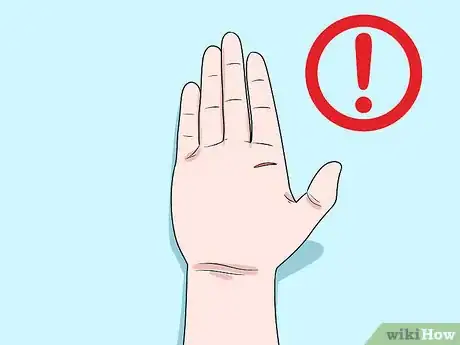

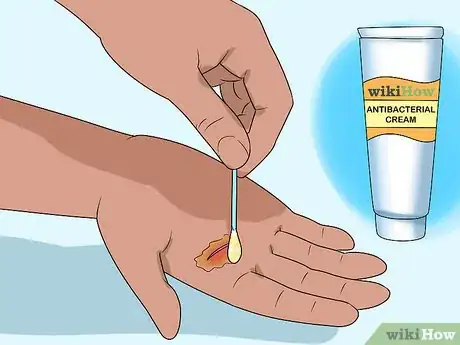
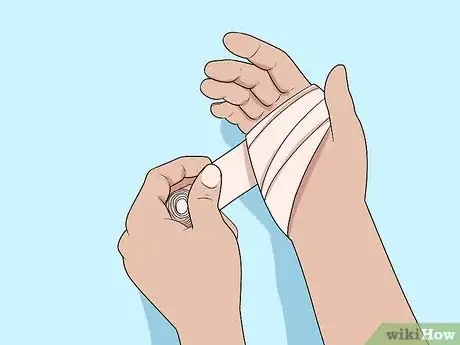


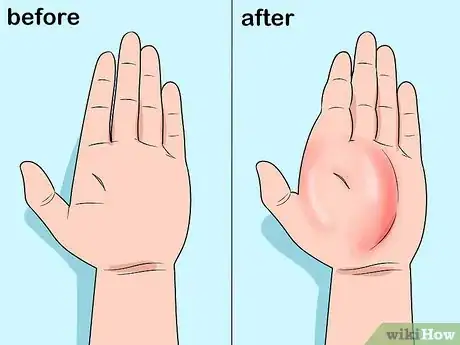
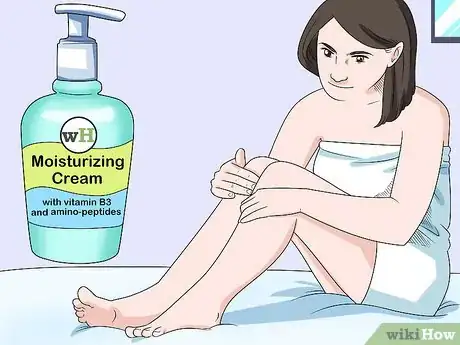


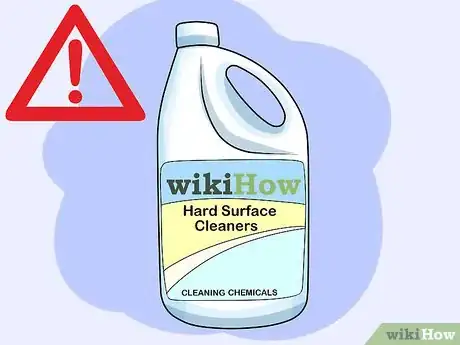



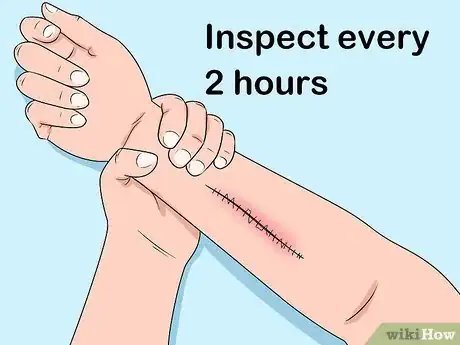


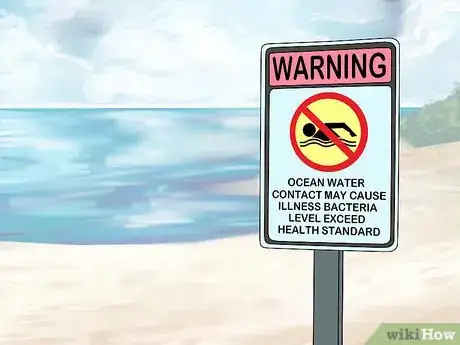


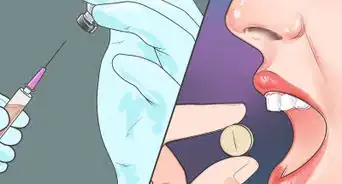

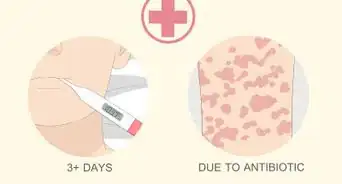







-Step-11.webp)












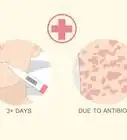



































Medical Disclaimer
The content of this article is not intended to be a substitute for professional medical advice, examination, diagnosis, or treatment. You should always contact your doctor or other qualified healthcare professional before starting, changing, or stopping any kind of health treatment.
Read More...